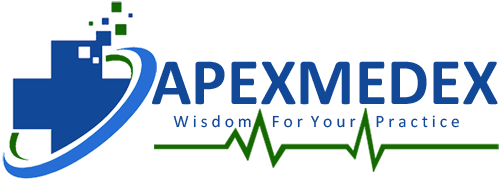- The medical credentialing process can be an overwhelming task for healthcare providers. It entails completing numerous forms, paperwork, meeting various payers’ requirements, and following up on applications.
- This complexity amplifies when providers aim to collaborate with multiple payers. Furthermore, any errors made during the application process can significantly prolong the already lengthy credentialing process.
- Amongst all these complexities, the team at Talisman Solutions has observed three common credentialing mistakes that providers often make, further lengthening the already long process.
- Understanding and avoiding these mistakes can significantly expedite the credentialing process, especially for providers with limited experience in credentialing.
- So, without further delay, let’s discuss the three common mistakes that providers should avoid to expedite their credentialing process:
- 1. Incomplete or Inaccurate Documentation:
- This mistake poses the most significant challenge in the credentialing process. The sheer volume of required documents can overwhelm providers, leading to difficulties in presenting comprehensive and accurate information.
- This may result in inadvertently submitting erroneous or incomplete forms, consequently leading to rejections and prolonging the credentialing timeline.
- How to Avoid: To prevent issues related to incomplete or inaccurate documentation, it is advisable to thoroughly review the payer’s requirements before submitting the application. Ensure that all necessary documents are complete and accurate by creating a comprehensive checklist.
- This checklist should cover essential details such as education, address, employee information, licenses, certifications, work history, and more. Utilizing digital tools for document verification can be beneficial in minimizing human errors during this process.
- By taking these proactive steps, the provider can enhance the accuracy of their submissions and streamline the application process.
- 2. Failure to Keep Updated Information:
- Outdated documentation maintained by providers can hinder their credentialing process. Discrepancies in payer records, such as outdated contact details, licensing information, or certifications, can accidentally be submitted by providers, causing significant delays or even preventing them from collaborating with desired payers.
- How to Avoid: To prevent this error, providers should consistently review and update their information, a critical step in the credentialing process. Regular updates should not only be made within their records or systems but also communicated to relevant parties, including licensing boards and credentialing organizations such as the American Nurses Credentialing Center (ANCC), American Board of Medical Specialties (ABMS), and the National Commission for Certifying Agencies (NCCA).
- Employing modern software can expedite the tracking and updating of information when changes occur. This approach ensures that providers avoid retaining outdated information and proactively mitigates the risk of using obsolete data for crucial processes like credentialing.
- 3. Lack of Understanding of Payer Requirements:
- Providers often desire to collaborate with multiple payer organizations, yet they may overlook the distinct requirements that each payer has for the credentialing process. The intricacies of this process, coupled with its daunting nature, sometimes lead providers to underestimate the importance of customizing their documentation to align with the specific criteria of each payer.
- Consequently, they may adopt a one-size-fits-all approach in their pursuit of payer credentialing. Unfortunately, this oversight can result in various issues, including application rejections and prolonged processing times.
- How to Avoid: This mistake can be avoided by thoroughly researching the specific payer requirements with whom the provider intends to collaborate. It’s essential to recognize that each payer is unique, with potentially different requirements, making a one-size-fits-all approach impractical.
- Before submitting documentation, it is crucial to tailor it according to the payer’s specific criteria. This ensures that the documentation aligns with the individual requirements outlined by the payer.
- Providers can also seek assistance from professional credentialing service providers who specialize in the credentialing process. These experts have a team with extensive experience and knowledge of the varied requirements of each payer, offering comprehensive support throughout the credentialing process.
- There can be other mistakes that a provider might make, in addition to those mentioned above. For instance, not following up with the payer regularly can impede the credentialing process. Regular follow-ups with the payer can expedite the process by serving as a reminder to the payer’s team about your application.
- If the provider’s application is stalled due to some issues, proactive follow-ups can help identify and address these issues promptly. This ensures that the provider’s application progresses smoothly, increasing the likelihood of swift credentialing by the payer.
- Accelerate the Process Independently or Seek Expert Assistance
- Providers can either identify and rectify mistakes or errors in the credentialing process independently to expedite the credentialing process, or they can seek assistance from expert companies like Talisman Solutions.
- These companies offer proven credentialing services that efficiently and rapidly complete the credentialing process. This enables providers to focus on what they do best—providing care and seeing more patients sooner.
- How Talisman Solutions Can Expedite Your Credentialing Process?
- For providers seeking a streamlined and efficient credentialing process, partnering with a professional credentialing company like Talisman Solutions is a game-changer.
- In-Depth Understanding of Payer Processes: Talisman Solutions brings a wealth of experience in collaborating with diverse payers, possessing comprehensive knowledge of their distinct processes and requirements. This familiarity allows for a smoother and more tailored credentialing experience for providers.
- Expert Credentialing Team: Our proficient team of credentialing experts is highly skilled in navigating the complexities of the credentialing landscape. Their dedication ensures meticulous attention to detail, promoting accuracy and efficiency throughout the credentialing process.
- Harnessing Technology for Swift Credentialing: Talisman Solutions stays at the forefront of innovation by utilizing cutting-edge digital tools, including advanced AI technologies. This strategic integration enhances both the precision and speed of the credentialing process, providing clients with a seamless and expedited experience.
- Conclusion
- In summary, overcoming challenges in the medical credentialing process is essential for providers aiming for efficiency. Addressing issues like incomplete documentation, outdated information, and a lack of understanding of payer requirements is pivotal for expediting the credentialing journey. Key strategies include thorough research, regular updates, and customized documentation tailored to each payer’s criteria. Proactive follow-ups further contribute to streamlining the process.
- Alternatively, to streamline the credentialing process, providers can consider partnering with expert credentialing services providers like Talisman Solutions. With their in-depth knowledge of payer processes, experienced team, and cutting-edge technology, Talisman Solutions can help providers focus on providing quality care and expanding their patient base by expediting the credentialing process with the desired payers.


Recent Comments